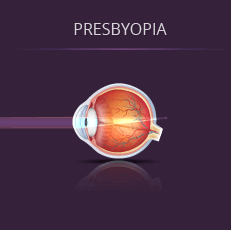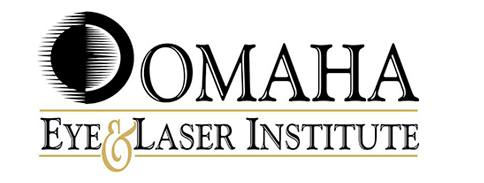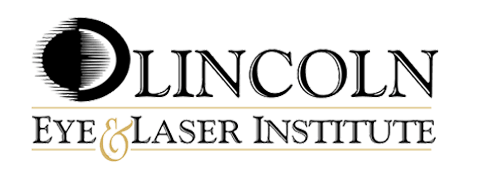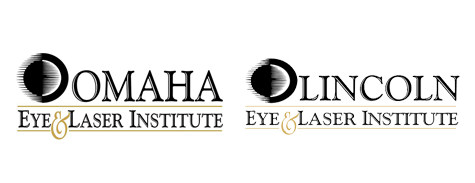Your Evaluation
All pre-operative measurements are carefully performed by your doctor and a team of highly trained technicians, using the most advanced technology:
Pentacam measurements: The Pentacam is used to measure four aspects of the cornea: the front or anterior surface, the front curvature, the posterior curvature, and the thickness. These four parameters help determine if you are a good candidate for surgery.
Wavefront measurements: The CustomVue Wavefront and iDesign aberrometers and iDesign measures aberrations or imperfections in your visual system which are responsible for decreased clarity in your vision. These aberrations include things such as lower-order aberrations (nearsightedness, farsightedness, and astigmatism) and higher-order aberrations (such as coma and trefoil). Higher-order aberrations can cause halos, glare, and ghosting, but custom procedures can now correct or decrease their severity after surgery.
Corneal thickness with ultrasonic equipment: While the pentacam can measure the thickness of the cornea, we also use ultrasonic measurements as an alternate measure of your cornea thickness.
Dilated fundus evaluations: Structures inside the eye are important to the long-lasting effects of LASIK eye surgery. Retinal abnormalities are best treated prior to undergoing iLASIK surgery.
In Addition To The Complete Ocular Examination, We Want You To Understand What Is Included In The Coverage At Omaha Eye And Laser Institute:
Follow-up examinations for a year which are spaced at one day, one week, one month, three months, six months, and a year post-operatively.
Enhancements for a full year following the initial iLASIK surgery at no additional charge.
An OELI surgeon who is readily available in the rare event that problems should arise.
In-house lasers at our surgical suite, which are not transported between surgical centers. This ensures stability and strict monitoring of these very precise instruments. and equipment.
Before iLASIK Surgery
Contact Lens Use: Soft contact lenses are best discontinued two weeks prior to the measurements for surgery.
Rigid gas-permeable (RGPs) or hard contact lenses are best discontinued one month for each decade of RGP use prior to final measurements. At the first visit, the doctor will check the patient’s prescription and preform baseline scans. Several weeks later, these measurements will be repeated to check for changes and ensure stability. A dilated evaluation will be performed prior to surgery.
What To Expect The Day Of Surgery
The Day Of Surgery
Time: Expect to be in the office for a couple of hours. If you need additional measurements or scans, this time could increase. You will need someone to drive you home.
Drop Usage: Do not use any drops before your surgery time, on the day of surgery.
Makeup/Cologne: Do not apply any makeup, foundation, or lotion on the face or eyes prior to surgery. Please remove all eyeliner and mascara before coming in for surgery. Do not use any cologne, aftershave, or perfume.
What To Expect Post Surgery
Immediately After The Surgery (Same Day)
Vision: You should notice an improvement in your vision, but it is normal to have a slightly blurry vision right after the surgery. Crisp acuity typically comes within a day or two.
Drop Usage: You will be using two different prescription eye drops starting when you get home from surgery. The first will be an antibiotic drop to prevent infection and the second is a mild steroid drop to prevent inflammation after surgery, It is very important that you use them as instructed by the doctor. The antibiotic drops will be used 4 times on the day of surgery and the steroidal drops every hour while awake for the remainder of the day.
Goggles: You will be given sunglasses that need to be worn for the day of the surgery and eye shields that you will take on each eye for at least 5 nights following the surgery. These shields are to ensure that you don’t rub or hit your eyes in the middle of the night.
Day One After The Surgery: Your First Follow-Up Appointment
Vision: Visual acuity can vary from 20/15 to 20/40, depending on the patient’s prescription and healing process, but most people can drive themselves the day after surgery to their first follow-up appointment. It is imperative to adhere to the follow-up schedule to maintain normal healing.
Dryness: It is normal for your eyes to be dry for up to 6 months after the surgery. Preservative-free artificial tears should be used frequently after the surgery, especially the first week. Use the preservative-free artificial tears 4 to 6 times a day (or more) for the first week. It helps the healing process and helps smooth out the cornea to create a clearer vision. In addition, your doctor may prescribe Restasis to decrease dryness and improve tear function and visual outcome.
Drop Usage: In addition to the artificial tears, patients are to use antibiotic and steroid drops as prescribed. These instructions may change with follow-up visits.
First Few Weeks After Surgery
Vision: It is normal for vision to fluctuate after surgery. Fluctuations can occur up to 6 months after surgery, with most of the changes occurring in the first several weeks. Conditions such as the amount of correction, ocular dryness, and the way the eye heals will determine the endpoint of the vision. Remember, everyone’s eyes are different and so is the healing process.
Enhancements: In the event that a touch up is needed after the initial procedure, we generally wait 3 months in order to let the eye heal and stabilize from the initial procedure.
There Are A Number Of Post-Operative Restrictions Which You Should Be Aware Of, In Case Arrangements/Plans Need To Be Changed:
Swimming: No swimming or hot tub for two weeks. Lakes should be restricted for one month after surgery.
Exercise: No strenuous exercise or lifting weights for one week after surgery. This is to eliminate sweat from getting in the patient’s eyes and excess pressure on the eyes.
Eye Make-up: No eye make-up should be used until one week after the surgery.
Water/Showering: Avoid having water get in your eyes for the first week after surgery. Showering is fine as long as the water does not stream from your hair into your eyes. Gently hold a washcloth over your eyes to prevent water from getting in them. You can dab around your eyes to remove any debris from your lashes.
Presbyopia
 Patients younger than 40 can typically see well at distance and near after iLASIK. Those that are 40 or older typically will have some presbyopia.
Patients younger than 40 can typically see well at distance and near after iLASIK. Those that are 40 or older typically will have some presbyopia.
Presbyopia is the inability to see up close while wearing your distance correction. It is caused by the progressive aging of the lens in your eye. Most patients notice its effects in their early 40s. Farsighted people will notice that they have to hold things further away to see them better and nearsighted people notice that they have a harder time seeing up close with their glasses or contacts on.
Without iLASIK farsighted and nearsighted patients will need to use bifocals to help with near vision tasks in their early 40s. After iLASIK patients in their forties or older can expect to see well far away without their glasses or contacts but they must understand and be willing to use reading glasses after iLASIK for near vision tasks.
These are some of the things that become harder to see clearly because of presbyopia.
- novels, books, magazines
- cell phones
- price tags
- recipes
- washing machine dials
- menus
- checkbooks
- wristwatch
- computer screen
Some presbyopic patients, as an alternative to full-time reading glasses, will opt to have “monovision” done when they undergo refractive surgery. With monovision one eye is corrected for distance and the other for near. Therefore, with both eyes open, patients are able to see far away or up close. While it does take several months for some patients to adapt to monovision, not everyone adapts well. If you are considering monovision, you should discuss this option with the examining doctor.
Monovision is not perfect. Some patients may need glasses for driving, to correct their near eye and have better depth perception. Others may need reading glasses should they need to do the prolonged reading. Also, the amount of nearsightedness needed in the near-eye may need to be adjusted as time goes by.
DMV Restrictions: For your information, most states require driving vision to be at least 20/40 or better in each eye to not have a restriction on your license. Most monovision patients will have near-eye acuity less than 20/40. Therefore, many monovision patients may still have a restriction for some sort of vision correction on their license.





